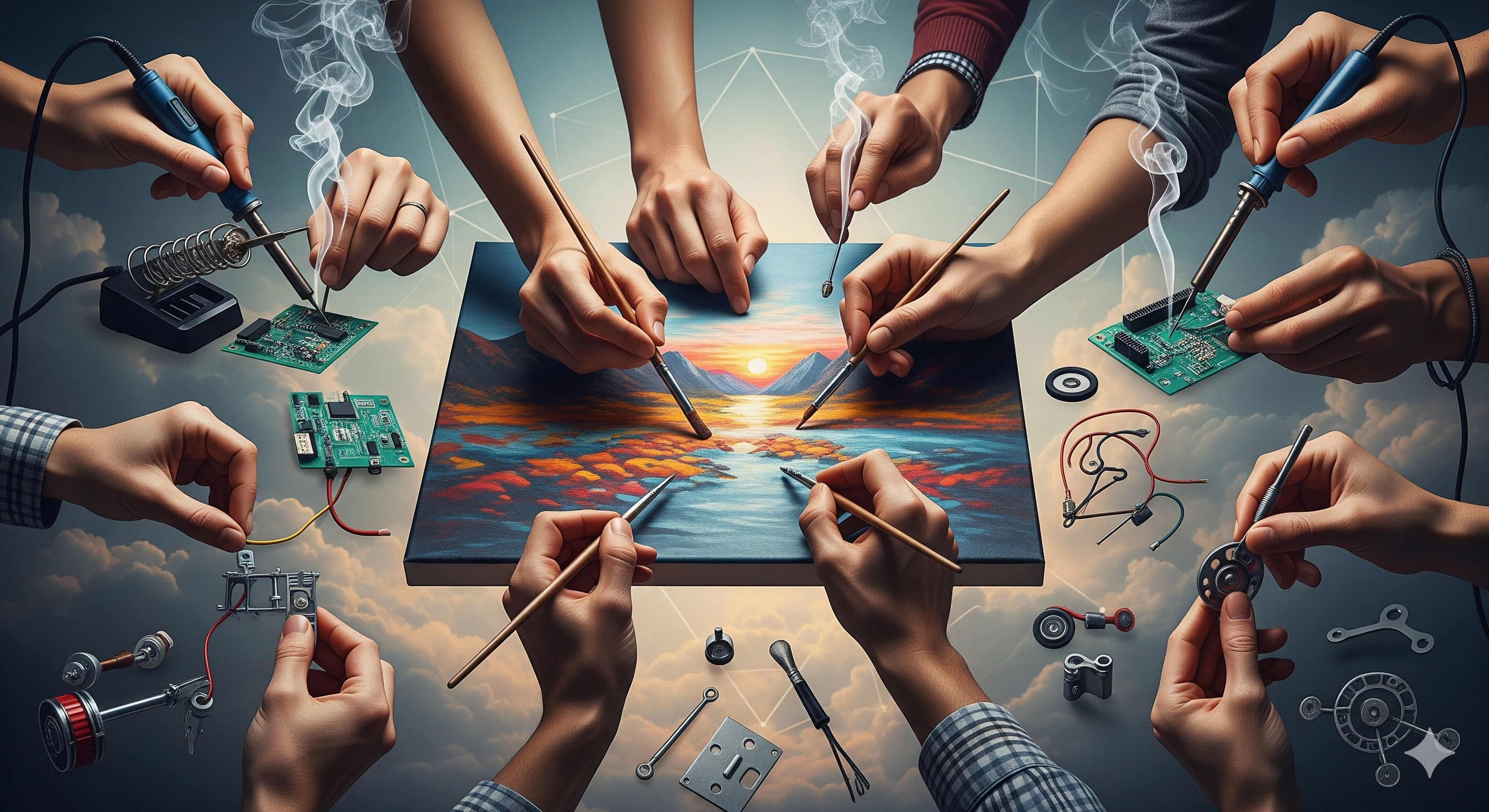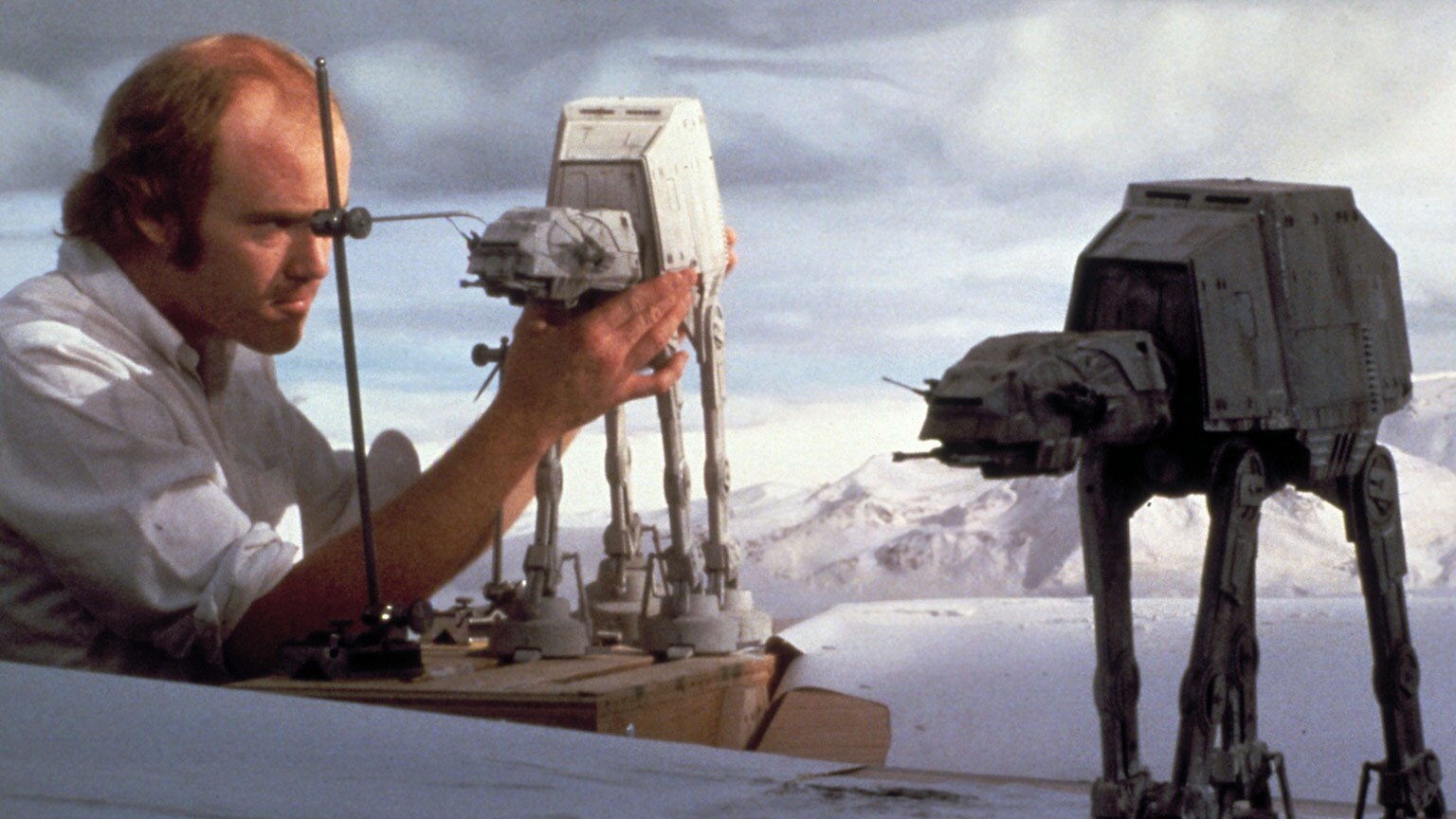Why I Became a TD
A personal reflection on how my roots in art, technology, and storytelling led me to the role of Technical Director, and why solving problems has always been my creative path.
I grew up in Connecticut surrounded by both artists and engineers. My maternal grandparents were painters. My father’s father was an engineer. My dad was a photographer, one of the first people I knew experimenting with Photoshop to create digital art back in the early 1990s. My mom directed a library, which taught me the value of organizing knowledge and making it accessible. And my brother went on to found an incredible software company that built the backbone of many library systems around the world.
That mix of art, technology, and systems thinking left a deep mark on me. Some of my earliest memories are tied to film, but my first professional steps weren’t in animation. They were in computer repair and network management. From there I moved into programming, working at a small software company that built tools for towns and municipalities. Eventually I co-founded a computer company with a close friend, which helped me pay my way through undergrad.
And yet, through all of this, one image kept pulling me forward: Phil Tippett animating the AT-ATs in The Empire Strikes Back.
“That shot was a compass. It reminded me that art and technology could collide in a way that felt like pure magic.”
So how does that lead to me being a TD?
When I went on to pursue an MFA, it wasn’t about learning to be an artist from scratch, it was about refining my eye. I took traditional animation classes and computer animation courses, but I noticed a pattern: no matter how much I loved creating, I always drifted toward problem-solving. How could I make the tools better? How could I smooth out the process so others could create more freely?
Leadership and Mentorship
Later in my career, I had the privilege of running a world-class university animation program and founding an animation studio that became the backbone for the school’s animation creative output. As department head, I was responsible for making sure every part of the creative process was covered, concept art, scriptwriting, storyboarding, and the craft of putting a soul into 2D and 3D characters.
While my faculty team handled those areas, my own teaching focused on Unreal filmmaking, production management, professional development, and the craft of animated filmmaking. I guided students not only in the technical and creative aspects of the medium, but also in how to think like professionals, balancing vision with process, artistry with pipeline.
That experience reinforced something I had always known: being a TD is about more than solving technical puzzles. It’s about building environments where creativity thrives, and where artists have the tools, mentorship, and structure to do their best work.
What a TD Actually Does
As a TD, Technical Director, I learned early that my greatest contribution wasn’t in animating a character, sculpting a model, or painting a texture (though I can do all of those). It was in seeing problems before they slowed production and building elegant solutions that helped entire teams move faster.
That doesn’t make me less of an artist. In fact, my creativity runs deep. Between my time at Sony Pictures Imageworks and Walt Disney Animation Studios, I took the time to complete multiple screenplays, and I’ve kept pushing myself to keep writing and getting ideas out ever since. I love making films and video games. I love mixing animation, powerful effects, and deep storytelling.
And that’s why I became a TD. This role gives me the ability to push each of those areas forward, storytelling, visuals, technology, while wearing many hats across my career. I understand what drives artists because I’ve always been one, and I understand the systems that support them because I’ve spent my life building those too.
What I bring to films, animated features, and games is a way of enabling creativity at scale:
- Problem-Solving Early – I can anticipate issues before they become roadblocks and design solutions that keep production on track.
- Tool Development – I build scripts and systems that remove repetitive, painful tasks so artists can focus on their craft.
- Pipeline Thinking – I see the big picture of how departments connect, and I design workflows that make handoffs seamless.
- Creative Empathy – I know the joy of storytelling and performance, so every technical solution I design has artistry at its core.
At heart, being a TD is about reducing friction. I clear the path so animators, lighters, modelers, and storytellers can do what they do best. My role is the invisible hand that makes the visible magic possible.
For me, becoming a TD wasn’t about stepping away from creativity. It was about expanding it. It was about realizing that my imagination could live not only in a drawing or a performance, but also in a well-designed tool, an elegant pipeline, or a workflow that turns chaos into clarity.
That’s how I honor that spark I first saw watching Phil Tippett move an AT-AT frame by frame: by building systems and solutions that keep the magic alive for today’s storytellers.
The TD Role Today
In an era where studios are expected to deliver Marvel-level spectacle on television schedules, the TD role has become more critical than ever. We’re not just solving problems anymore, we’re predicting them, building systems robust enough for next year’s impossible deadline, and flexible enough for requirements that haven’t even been invented yet.
What excites me most about being a TD today is how the role is shifting from gatekeeper to enabler. The tools I build aren’t just for the studio elite anymore; they’re part of making high-end animation techniques accessible to smaller studios, independent creators, even individual artists who grew up watching those AT-ATs and thinking, “I want to make that magic too.”
And as AI reshapes our industry, the TD role is becoming more crucial, not less. Someone needs to understand both the artistic intent and the technological capability, to know when AI enhances creativity and when it gets in the way. TDs are the translators between human imagination and machine possibility, and that’s where I’ve always felt at home.
If you’re interested in how the TD role has evolved over time, read The Shape-Shifting Role of the TD, the TA, and Now the AI Developer.
For a deeper dive into the invisible gaps and unrecognized contributions in our industry, check out The Role That Doesn’t Exist.

